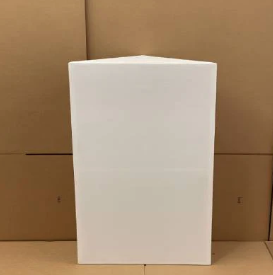Your Cart is Empty
August 26, 2025 3 min read
Ever recorded a track and noticed that the bass sounds muddy or unclear? Or maybe your mixes never translate well outside your home studio? If so, you’re not alone. Many home studio owners struggle with low-frequency issues that make even the best equipment feel limited. That’s where studio bass traps come in—they can completely transform the sound of your space.
Bass traps are acoustic treatments designed to absorb low-frequency sound waves that often accumulate in corners and along walls. Unlike standard acoustic panels, which target mid and high frequencies, bass traps tackle those stubborn low-end waves that cause:
● Boomy or muddy bass in recordings
● Uneven frequency response across your room
● Standing waves that create "dead spots" or overly resonant areas
In a home studio, these problems are especially noticeable because most rooms aren’t designed for professional acoustics. Even if you have expensive monitors, untreated bass can mislead your mixing decisions.
Here are a few typical low-frequency issues you might notice:
Every rectangular room has natural frequencies that resonate more than others. These are called room modes. Without bass traps, these modes can create uneven bass, making some notes sound louder or softer depending on where you sit.
Corners act as traps for low frequencies, but in a bad way—they amplify them excessively. This results in a boomy sound that can make your recordings lose clarity.
Even small home studios can suffer from muddiness. Low frequencies that aren’t controlled blend together, causing mixes to feel congested. This is particularly frustrating when you try to balance instruments like kick drums and bass guitars.
Bass traps absorb problematic low frequencies before they bounce around your room. By strategically placing them in corners or along walls, you can:
● Reduce bass boom and muddiness
● Minimize standing waves
● Create a more accurate listening environment
Once your bass frequencies are controlled, mixes sound more consistent across different playback systems. That means what you hear in your home studio translates better to car speakers, headphones, and larger studios.
By balancing the low end, your mid and high frequencies become clearer. This creates a more enjoyable and precise mixing experience, allowing you to make better creative decisions.
● Place traps in corners first: This is where low-frequency buildup is strongest.
● Use multiple traps: One or two won’t be enough for most rooms. Consider both vertical and horizontal placement.
● Combine with other acoustic treatments: Mid and high-frequency panels complement bass traps for a full-spectrum solution.
● Test and adjust: Walk around your room and listen for uneven spots, then adjust placement for maximum effect.
Imagine finally hearing every bass note exactly as it should sound—tight, defined, and punchy. With bass traps for home studios, that clarity is within reach.
At John Hunter Acoustics, we design and provide studio bass traps that not only control your low frequencies but also enhance your entire mixing experience. Every corner of your home studio becomes a space where creativity flows freely and every mix translates perfectly.
Don’t settle for muddled bass or frustrating echoes, upgrade your studio environment and feel the difference from the very first session. Connect with us today and let your music shine the way it was meant to.
